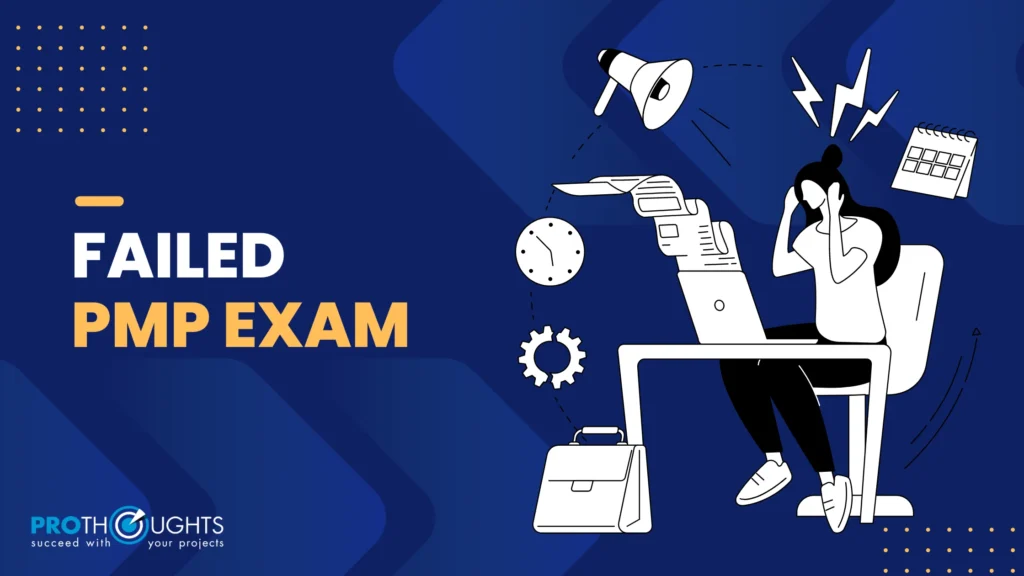
It is not a simple exam to clear the PMP exam. It’s a 4-hour multiple-choice exam with 200 questions. To clear, you must answer 106 of the 200 questions right out of a total of 200. Candidates, on the other hand, fail. It happens every single weekday. However, knowing that it results is of little comfort if you are the one who fails. So, now that you’ve failed, what can you do? You’re not the only one who senses this way. It happens often. It’s a tough exam, and the first time you take it, you’ll probably learn a lot about how to proceed with it. A large percentage of those who try to fail. Let’s look at how you can adjust and respond if something like this happens to you.
If You Fail the PMP Exam, Here’s What You Should Know
Let’s take a look at some facts before we talk about techniques for your next attempt
The PMP exam fee for the second and third attempts is reduced, and the fee for PMI members and non-members will be different. Also, the following are the PMP Certification Fees for the second or third re-examinations of the computer-based test:
275 USD for PMI members
375 USD for non-members
The following are the fees for the second and third re-examinations of the paper-based test. So, Members of the PMI receive a discount of $150 and non-members pay $300.
What is the PMP Exam’s failure rate?
You may be wondering what proportion of candidates are in your predicament now that you have failed your test. Because the PMI does not release any official data, it is impossible to estimate the percentage of candidates who fail the exam. However, based on my personal experience, I believe the number is fairly large, which is why this qualification is so valuable. Also, there is some good news: the passing percentage for the second attempt is quite high. Although this is sheer guesswork based on my contacts with hundreds of second-time exam takers, it appears to be the case. As a result, you have a greater probability of passing the PMP test the second time around than you did the first.
Self-audit is the first step after a failed PMP Exam attempt
If you fail the PMP exam, begin by conducting a self-audit. You must determine the precise reason for your failure. Your failure could be due to a variety of factors. The following are a few examples:
1. You did not adequately prepare
2. Exclusively used free resources
3. Succumbed to exam stress
Pay Attention to What You Didn’t Know and Make Up for It
If you completed the exam online rather than on paper, you received your pass/fail decision as well as your rating in each of the PMBOK project stages within seconds of finishing the exam. This is critical information to keep in mind as you prepare for your upcoming study session. The following are what you’ll need to do next:
Read the applicable PMBOK Guide part several times in the areas where you were lacking in proficiency, making sure to maintain a level of concentration that ensures retention if not complete knowledge. Additionally, locate and answer as many questions as you can in those places. Don’t stress about finding questions in areas where you excelled; instead, place less emphasis on them. So, if you have exam simulation software that presents your results by project phase, continue these steps until you obtain a score of more than 80% right. Remember that this score isn’t the same as the one used on the exam, but it’s a good starting point for you.
The Question Distribution
It’s also a good idea to keep in mind the proportional relevance of each examination domain in terms of question count. According to how much time a project manager normally spends in each area, questions are distributed throughout the domains in the exam:
People – 50%
Process – 42%
Business Environment – 8%
PMP domains represent overarching knowledge and expertise that project managers must possess to manage projects effectively. Moreover, these PMP domains provide a structured framework for categorizing and organizing the various knowledge areas and competencies essential for successful project execution.
How many times do you think you’ll be able to take it?
Within your one-year eligibility period, you have three chances to pass the exam. If you don’t pass the exam the first time, you’ll have to wait a year before attempting it again, but you can still apply for additional PMI credentials. If your one-year eligibility term ends before you pass the exam, however, you must reapply and pay the requisite costs. The re-examination charge is $275 for members and $375 for non-members if they have already missed the boat.
Keeping the Readiness Criteria in Mind
As previously stated, you are likely ready for the exam if you can complete an exam set of 200 questions covering all of the PMBOK Guide and knowledge Areas in four hours and answer roughly 80% of the questions correctly. To be able to determine this, you’ll need a set of appropriate tests for which you don’t recall the answers from past efforts! So, don’t wait too long to attempt again, because unless you continue to study, your exam knowledge will deteriorate with time.
